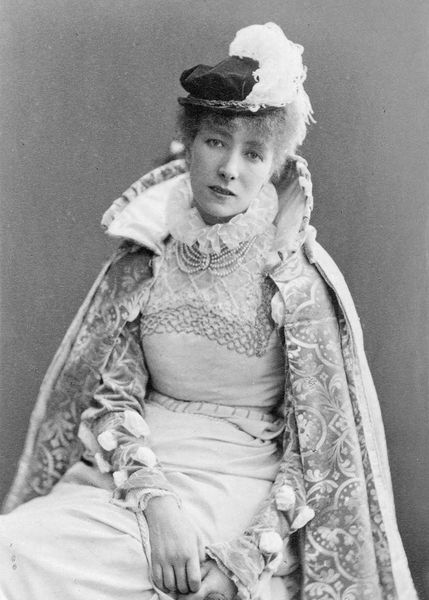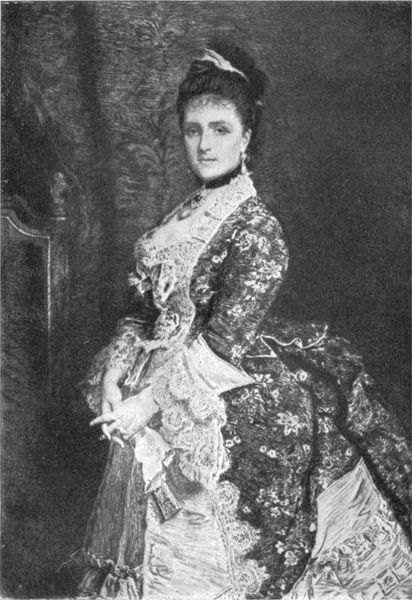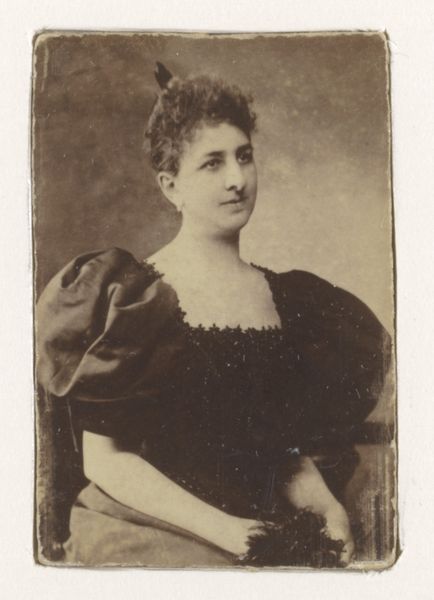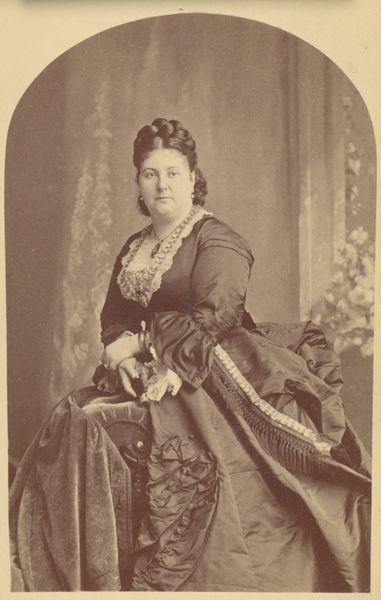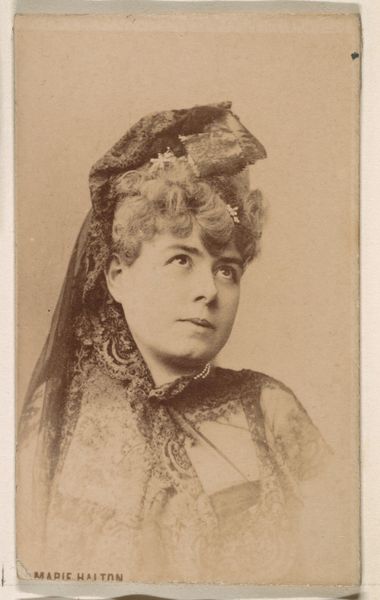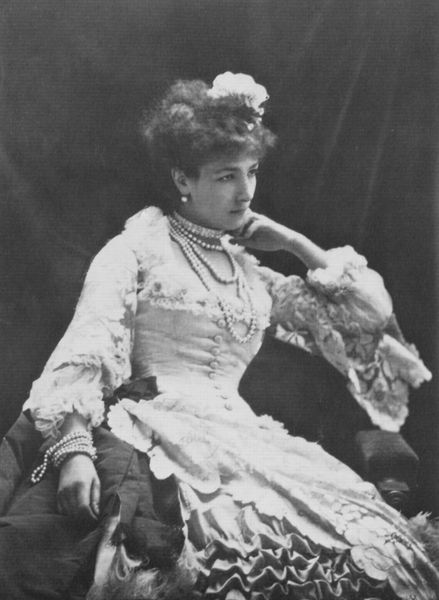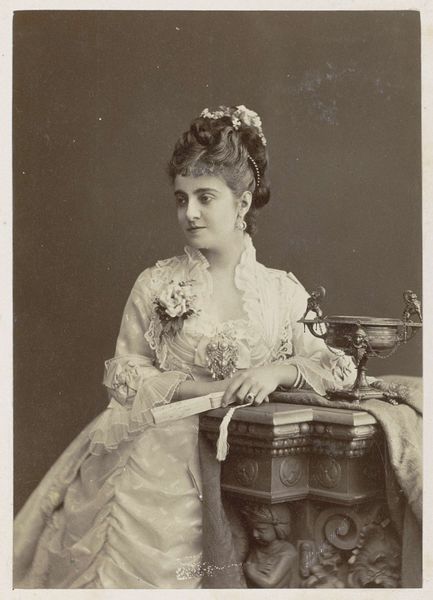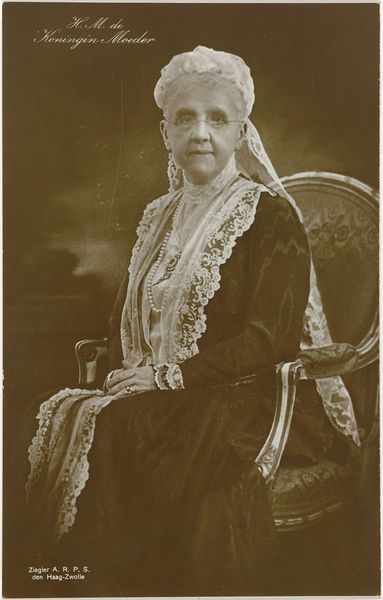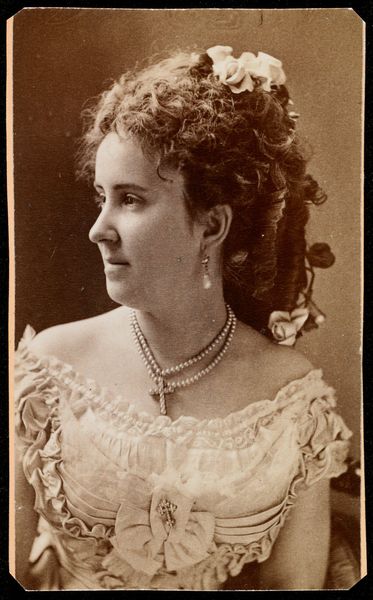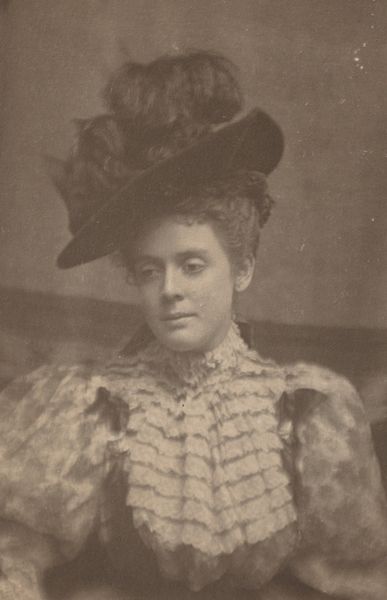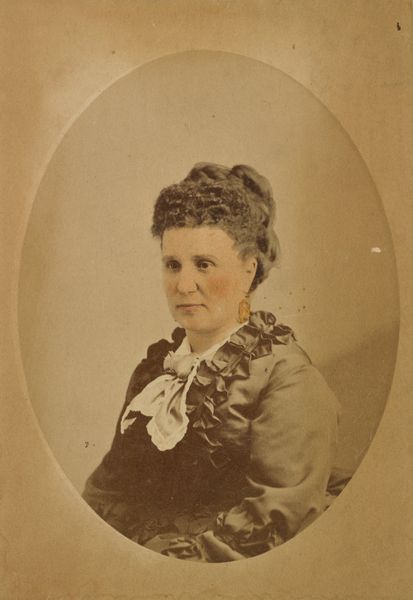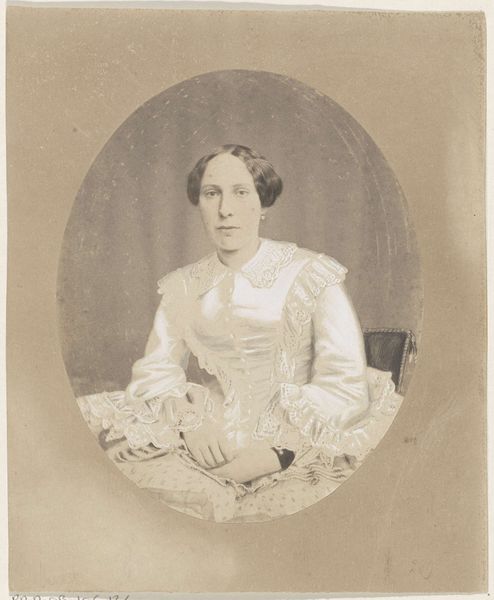
Copyright: Public domain
Curator: Standing before us is Félix Nadar's portrait, "Duchesse Marguerita De Madrid," taken in 1878. What strikes you most about this gelatin silver print? Editor: The austerity! The crisp, almost severe lines and the subject's...unsmiling demeanor create this sense of aristocratic distance. It’s beautiful but undeniably chilly. Curator: Nadar had a real talent for capturing the essence of his sitters, and he wasn’t afraid to show what others might try to hide. This image reflects the political realities of the time; perhaps we glimpse a stoicism born from the upheavals faced by European nobility. Editor: True. The Duchesse's clothing—the pearls, the ribbons, the elaborate dress—speak to a rigid social hierarchy, one built on displays of wealth and status, photographed by an artist well-known for his political cartoons critiquing power structures. Do you think Nadar subtly captured this tension in the Duchesse’s eyes? Curator: Absolutely, and it’s reflected in his focus on texture. Look at the rendering of the fabric, the almost brutal honesty of light and shadow! It is less flattering than perhaps traditional painted portraiture, no idealized softness here! Editor: Yes! It also makes you consider the physical burden these women bore. Her garments are exquisite but probably intensely uncomfortable! The weight, the restriction… it’s all communicated in the picture's static stillness. This form of capture makes me uneasy. What are your final thoughts about Nadar’s Duchesse, framed between worlds? Curator: I think he managed to trap her between social expectation and human personality, with perhaps a quiet plea for her dignity. It’s a stunning study of a woman navigating constraints, both imposed and internal.
Comments
No comments
Be the first to comment and join the conversation on the ultimate creative platform.
